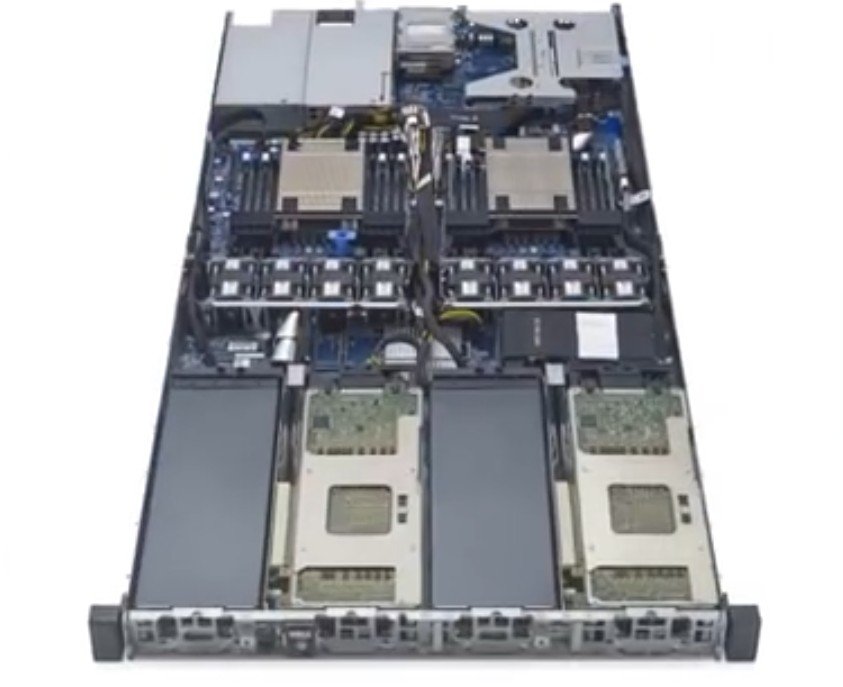Leading off a week certain to be rich in headlines from the Supercomputing ’14 conference, Dell charged forward with the announcement of a new series of densely-packed, 1U HPC servers built around a pair of Intel’s Xeon E5-2600 v3 series processors.
High-performance computing enthusiasts anxious for the arrival of the fleet on the beaches of New Orleans this morning can expect an armada. Dell’s new PowerEdge C4130 is being billed as “accelerator-optimized,” referring to its heavy leveraging of GPU power for highly parallel operations.
Dell’s tightest squeeze
As regular DatacenterDynamics readers are no doubt already aware, the v3 series of E5-2600 processors are designed to be the workhorse products in Intel’s server line. They represent the first x86 server platform to support DDR4 memory, which expands memory bandwidth by 14 percent on average, according to memory maker Samsung, at voltages reduced from 1.5 to 1.2 volts.
This fact alone, again according to Samsung, is promised to deliver up to 40 percent improvement in performance-per-watt over servers with DDR3 memory. Dell’s C4130 will support up to 256GB in 16 DIMMs of DDR4, all in a 1U form factor. For now, supported bandwidth will be 2133 MT/s. Though DDR4 technology does allow for higher bandwidths, Intel tells us it’s working on the technologies it needs to enable Xeon v3-based systems to support them.
Dell says C4130’s performance-per-watt approached 4.17 gigaflops per watt in internal tests. That’s up there with the top performers in last June’s Green 500 list. On that list, only the Tokyo Institute of Technology’s Tsubame-KFC (the #392 supercomputer in November 2014) scored better at just under 4.39 Gflops/W. Cambridge University’s Wilkes — a Dell T620 cluster based on Intel’s previous Xeon E5 v2 series, scored 3.63 Gflops/W, ranking it #2 on that list.
“This compact, 1U rack-mount server delivers industry-leading compute density and versatility, with up to two of Intel’s powerful Xeon E5-2600 v3 processors to provide supercomputing performance,” states Dell in a YouTube video released Monday morning.
The C4130 makes the most of its cramped 1U space, with what looks like a 4-car garage: a group of 4 PCIe accelerator slots that have already been tested for Intel Xeon Phi co-processors (Knights Corner generation) and Nvidia Tesla K80 dual-GPU accelerator cards. Dell acknowledges support for Nvidia’s GPUDirect technology, which provides optimized pipelines for video processing by leveraging InfiniBand bandwidth to relieve much of the burden of memory transfers.
And if you’re thinking, “wait a minute, video processing isn’t an HPC workload…” Well, it’s becoming one. Increasingly often these days, according to Intel, HPC providers are finding their clusters being leveraged for high-speed video processing, as movie and animation producers are looking to cloud-based data center clusters to offload their heavy workloads.
“Future support for InfiniBand EDR, with up to 100 Gbps per second of throughput, further protects your IT investment and reduces your total cost of ownership,” said Robert Bradfield, Dell’s director of server product marketing, in the video.
In the InfiniBand department, Mellanox is claiming its share of the glory as well, equipping Dell’s C4130 series with 56 Gbps InfiniBand adapters — the same series of adapters selected last month to help power Triolith, Sweden’s most powerful supercomputer, and the #122 performer on the new Top500 list.
C4130 also supports redundant 1600W power supplies with optional redundancy, fault-tolerant cooling modules, and up to four 2.5-inch SATA or SAS drives. The trick to opening up room for four, when the bay clearly looks to support just two, Dell tells us, is by swapping out the redundant power supply bay.
A new platform for a newer Lustre
Alongside C4130, Dell rolled out its latest Storage for HPC platform, which will now include Intel’s Enterprise Edition for Lustre, the HPC file system which Intel promises this week will be vastly improved. In a press conference last week, Intel vice president and general manager for HPC, Charlie Wuischpard, previewed some of what we’ll be seeing from Lustre and Dell.
“As you know, sometimes a cluster is only as good as its file system,” said Wuischpard. “You have to solve for both storage as well as compute. If I look around and find one thing that causes users angst in big supercomputing centers, it’s the problem with the file system… For us, Lustre is going into two main thrusts: one is to enhance products with ever-larger scale. Most of the top systems in the world use some form of Lustre; and as these clusters grow in size, there are new features and capabilities that need to be built into Lustre, and we’re working along those lines.
“The other is making Lustre more enterprise-ready and capable,” Intel’s VP continued. “Lustre’s famous for being a great solution, but one that requires a certain level of technical expertise; and really, we’re trying to make this much more enterprise-ready.” He told reporters to expect enhancements to Lustre’s code base with new systems being previewed this week.
[A Dell spokesperson contacted DatacenterDynamics Monday evening U.S. time to make certain we iterate that C4130 will not ship with Lustre as a component, but rather with Intel’s EE for Lustre as a Lustre management platform. The spokesperson told us that Dell Storage for HPC will feature the following components: Dell PowerEdge 630 servers running Intel E5-2600 v3 CPUs (models not identified), Dell PowerVault MD3460 block storage array for files, Dell PowerVault MD3060e dense enclosures for expansion storage, and Dell S55 networking switch. This buildout will feature Red Hat Enterprise Linux 6.5 support for Lustre 2.1.6, Intel EE for Lustre 2.0, and iDRAC7 remote access controller.]
It’s our first look at 1U supercomputers in the era of lower-power, DDR4, and 56 Gbps InfiniBand. That Green 500 list may be due for a pruning very soon.

